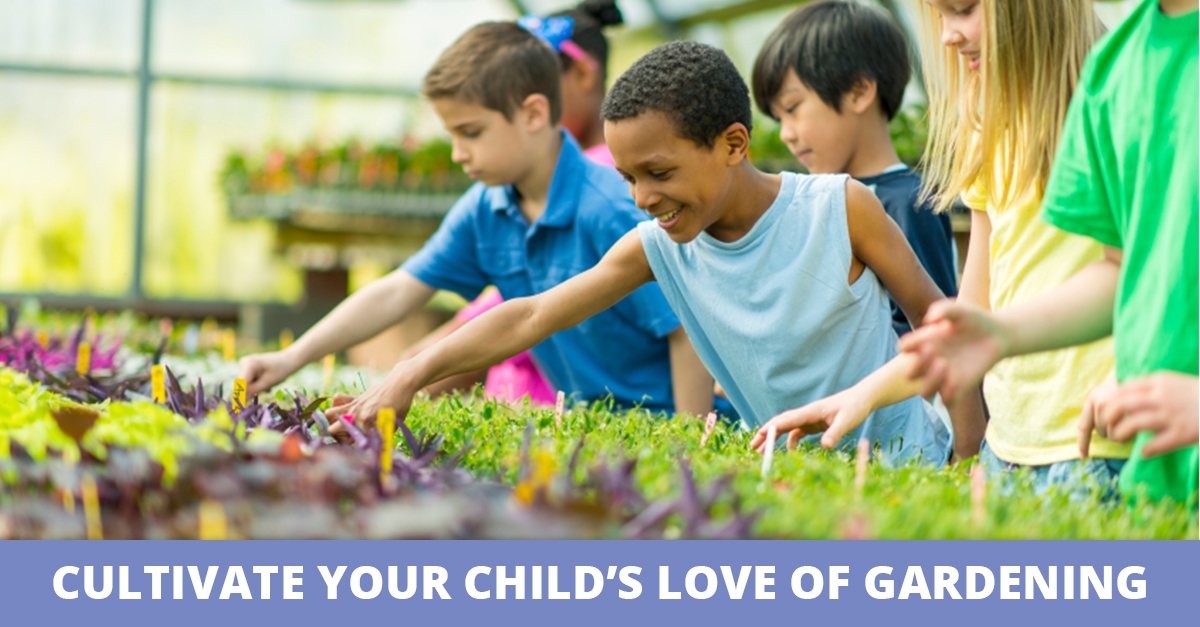Cultivate Your Child's Love of Gardening
Posted in Homeschool View on Thursday, April 1, 2010
 Almost all children have a natural tendency to garden. From the time they're little, children have an instinctive desire to dig in the dirt, play with water, and explore. Therefore, teaching children how to garden is really as easy as child's play.
Almost all children have a natural tendency to garden. From the time they're little, children have an instinctive desire to dig in the dirt, play with water, and explore. Therefore, teaching children how to garden is really as easy as child's play.
Yet, how can you assure your child's gardening experience is successful? No matter how green your thumb may or may not be, the garden is a great homeschool classroom. Help your child learn important lessons and discover the joy of gardening this spring with the following tips:
Pick a spot in your yard or existing garden with an equal amount of shade and sunlight.
Purchase a nice border to set off the space or make your own from stepping stones or bricks. The amount of area should reflect your child's age and size. First-time gardeners should start with a smaller area (4' x 6'). Remember, this is your child's garden, and it might not look picture perfect.
Include your child in the trip to the greenhouse or nursery.
Give your child a sense of ownership by allowing him to choose flowers and vegetables he would like to plant. Limit his selection and help him choose plants with a short growing season. As a quick reference, here's an easy-to-grow and fun-to-harvest list for kids:
Flowers - Sunflowers, nasturtiums, four o'clocks, pansies, and marigolds
Herbs - Parsley, sage, cilantro, mint, dill, basil, and chives
Fruits and Vegetables - Bush beans, carrots, potatoes, zucchini, radishes, cherry tomatoes, sugar snap (snow) peas, lettuce, spinach, pumpkins, cucumbers, peppers, squash, and strawberries
Pick a kid-friendly theme for your garden.
Examples include planting a garden that's all one color or all one vegetable (pick your child's favorite), spelling out your child's name as the plants grow, and using unique containers like old shoes or toys. You can also convert an outgrown sandbox into a garden bed.
Purchase or make child-size gardening tools.
A plastic, child-size wheelbarrow makes weeding and harvesting gardens easier for little hands. However, plastic rakes, spades, hoes, and trowels often break easily and frustrate younger gardeners, so if smaller real-life tools can't be found or made, it's better to let your child use adult tools.
Start seeds and plant seedlings.
Because of the care required in handling young plants from the time they are first seeds, your child will gain a deeper understanding of the life cycle of plants. In addition, your child can learn more about the entire growing process in the fourth grade science courses in the Monarch™, Switched-On Schoolhouse®, and LIFEPAC® homeschool curriculums from Alpha Omega Publications®.
Encourage your child to share the fruits of his labor.
When friends or family come to visit, let him give visitors a garden tour and share some of its produce.
Involve your child in all aspects of the gardening process.
When children invest time in planting, weeding, cultivating, and harvesting, they are sure to enjoy the final fulfillment of bringing their produce to the family table. Older children may also enjoy the financial reward of selling extra produce at a local farmer's market in your city.
Learning how to garden is one important homeschool lesson a parent can cultivate in his child. Not only does gardening provide healthy food and a fulfilling sense of responsibility and accomplishment, but best of all, it can also bring a family closer together!
Comments(0 comments)